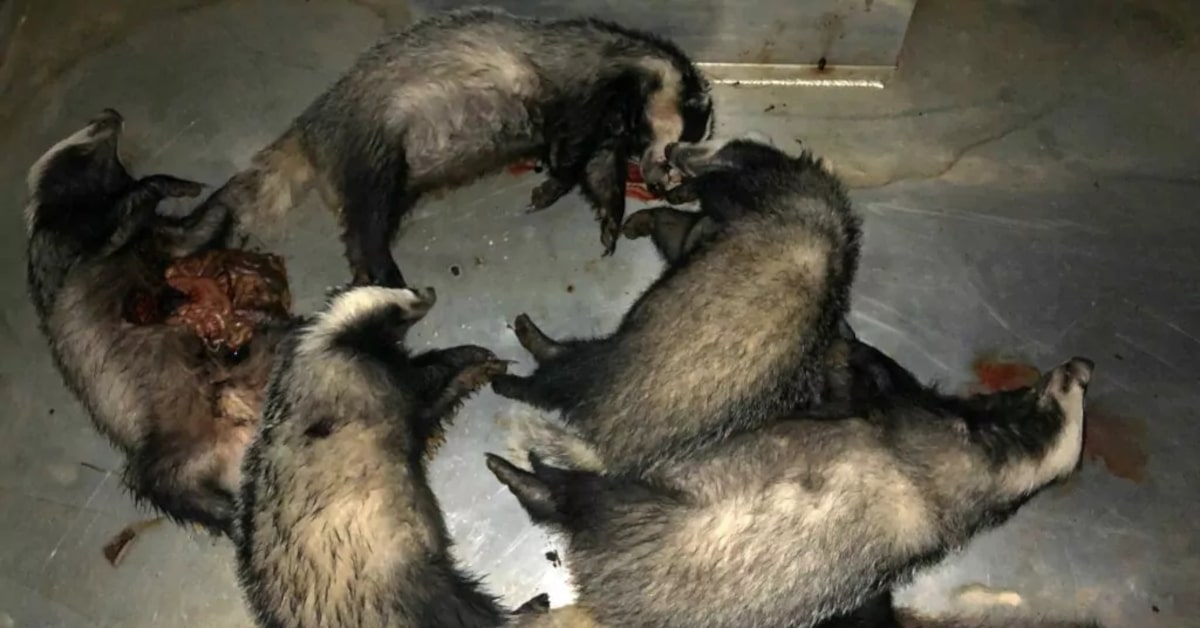I did like the Natural England quote:
""This is why we have used our powers as regulators to see that justice was done and to act as a stark warning to others that we will take the strongest action against those who do not respect the laws that protect the environment and wildlife we all cherish."
Meanwhile they do nothing and DEFRA are making badgers (a 'protected' species in the UK) extinct.
Some thinking is off kilter here.
A farmer has been jailed after illegally bulldozing a riverside beauty spot, causing a "devastating" effect on local wildlife.
John Price, 68, claimed he used a digger to dredge a stretch of the River Lugg near Leominster, Herefordshire, in December 2020 to protect local homes from flooding.
But Natural England officials said the river - a protected Site of Special Scientific Interest (SSSI) and one of the UK’s most important salmon rivers - had been "decimated" by the work and habitats of "iconic wildlife" such as otters, kingfishers and salmon had also been destroyed.
Price was found guilty of seven offences relating to breaching a Natural England stop notice at Kidderminster Magistrates’ Court and has been jailed for 12 months.
He has also been disqualified from being a company director for three years and has been ordered to repay the estimated £655,000 cost of the damage to the river and its embankments, along with £600,000 in court costs.
Sentencing Price, Judge Ian Strongman said: "Any person could not fail to be dismayed by the devastation caused by Mr Price - he has turned it into a canal devoid of most life. It is ecological vandalism on an industrial scale.
"It was a desire to reduce the risk of flooding. Some residents who live nearby are grateful for Mr Price for taking this action.
"The Environment Agency said the overall river level as high as recent years but Mr Price's actions have made things worse.
"It is total ignorance to nature and the environment."
Natural England and the Environment Agency described the damage as the worst case of riverside destruction they had ever seen and could take several decades to be fully restored.
John Price used an 18-tonne digger to dredge a section of the River Lugg and stripped a mile-long stretch of the bank of trees, claiming he was fixing the erosion of the river bed and was helping to solve flooding issues.
Homes near to the stretch of river were flooded during Storm Dennis in early 2020, but when Storm Christoph hit in January 2021, they stayed dry.
Speaking after he cleared the riverbank, he said: “I'm a Herefordshire farmer and have lived at Hay Farm and was born here at home.
“I have never moved and have watched this river all my life and no one knows this river better than myself.
“I have always looked after the river. I was asked to stop the erosion because I'm the landowner so I'm responsible for the river.
“It was up to the Environmental Agency to look after these rivers but they don't do any work and haven't got any money to do the work because they spend it all on clipboards.
“I have not pushed any trees out and I haven't knocked any trees down I have only cleared what ones came down in the flood.”
But wildlife experts described his actions as "devastating" and said he had actually weakened flood prevention measures rather than improved them.
Emma Johnson, area manager for Natural England, said: “The destruction of this section of the River Lugg was devastating for the abundance and range of species which thrived in this river.
"The River Lugg is one of the most iconic rivers in the UK and to see this wanton destruction take place was devastating.
"This is why we have used our powers as regulators to see that justice was done and to act as a stark warning to others that we will take the strongest action against those who do not respect the laws that protect the environment and wildlife we all cherish."
Martin Quine, Environment Agency place manager for Herefordshire, said restoring the health of Britain's rivers was a "complex task" that could "only be achieved in partnership with landowners".
He said: “While Mr Price’s justification for the works was to help prevent flooding to local properties, his actions did not have any flood prevention benefit.
"The destruction of river banks is not appropriate flood management. It is important that the Judge recognised that the works significantly weakened flood prevention measures rather than improved them.
“We urge landowners never to take extreme measure such as this and instead to always work closely with the Environment Agency around river management to agree the best solutions for both landowners and the environment.”
Helen Stace, CEO of the Herefordshire Wildlife Trust, described Price's actions previously as a “crime against the environment”, while BBC Gardeners’ World host Monty Don also expressed his shock at the “complete obliteration” of the site.
He said: "It breaks my heart but is all too-typical of the ignorance, arrogance and sheer wanton destruction of those privileged to care for our countryside."





